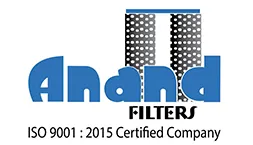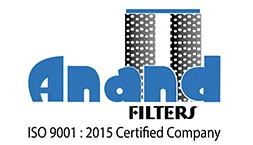
How Do Dust Collector Bags Work? A Complete Guide to Industrial Air Filtration
Understanding Industrial Air Pollution & the Need for Filtration
For Indian industries, maintaining air quality is a significant challenge. Pollution is now a serious issue. Did you know that it’s not safe to breathe in all the dust outside your house? Industrial air filters are a fantastic place to start when decreasing these pollutants. However, there are different alternatives as well.
In many industrial applications, air quality is an important consideration. High air quality is necessary to guarantee product integrity, reduce pollution, and eventually increase product safety.
Industries such as textiles, steel, cement, and medicines produce large volumes of dust. To capture these pollutants, a dust collector bag that is kept up to date is essential.
Manufacturers use air filtering devices to obtain this high air quality in their industrial processes. Industrial air cleaning improves the air quality in a system or environment by eliminating solid particles and molecular pollutants from industrial processes.
The Central Pollution Control Board, or CPCB, sets national ambient air quality guidelines and industry emission regulations. Industries must abide by these rules and use dust control equipment, such as dust collector filter bags, to lower particulate matter emissions. Additionally, regular reporting and monitoring are necessary.
Basics of Dust Collection: How Does It Work?
A dust collection system is a whole setup created to collect, filter, and get rid of dust and debris produced during different manufacturing processes. These systems frequently consist of ducts, hoods, filters, and collection containers. Together, these components maintain your workspace safe and hygienic.
After dust collector bags remove dust and other particles, the air is filtered, sorted, and then released back into the environment or workplace. Every design application primarily aims to release sterile air after filtering, separating, and capturing dust and other particles.
Indian Industrial dust collectors are essential to many dust collection systems, including shaker baghouses, plenum-pulse, reverse air, and pulse-jet systems. Anand Filters offers reliable solutions for all these systems. These bags assist in collecting dust particles, which improves the air quality, reduces risk of fire, and keeps dust from lowering the quality of products.
Working Mechanism of Dust Collector Bags
Non-woven fabrics are produced by joining the fibers together using mechanical, thermal, or chemical methods, as opposed to woven fabrics, which are generated by interlacing threads. This produces a robust and extremely porous material, making it perfect for air filtration. Imagine it as a sophisticated maze that traps particles while permitting air to pass through.
Particles of dusty vapor are caught on the threads and fibers as they pass through the fabric. Higher fiber densities capture pollutants more effectively. Clean air escapes either indoors or outdoors to maintain warmth.
Cartridge filters and dust collector filter bags both work well. Dust collector filter bags offer several benefits, including affordability, longevity, and ease of maintenance. They are cost-effective options for businesses with limited resources or those handling less dangerous particles. Because of their resistance to abrasive particles, these filter bags are appropriate for applications involving high and coarse dust loads.
Cartridge filters effectively capture particles as tiny as submicrons. They are, therefore, perfect for sectors where airborne pollutants or fine particles present health hazards. Because of their smaller size and lower pressure drop, cartridge filters use less energy, which saves money over time.
Key Factors Affecting Dust Collector Bag Efficiency
The fundamental technology of bag-type dust collection equipment is the choice and use of bag filter bag material, which significantly impacts the dust collector’s performance. One of the most crucial factors influencing the dust collector’s performance is the filter wind speed, which is also a vital indicator of the dust collector bag’s complexity.
The diameter of coarse particles ranges from 2.5 to 10 microns, while the diameter of fine particles is 2.5 microns or less. While fine dust necessitates specific filter media, coarse dust particles are simpler to catch. For efficient filtration, choose the appropriate dust collector filter bag according to the particle size in your sector.
Dust collection bags that are resistant to heat and moisture are essential to ensure proper working. They should be chosen considering that most of India is warm and humid, which causes dust to stick and clog filter bags.
Common Challenges & Solutions in Dust Filtration
Dust collection filter bags may become less effective over time due to particle blockage. Reduced suction from this dust buildup results in less airflow, lowering the system’s overall efficiency and performance and increasing energy consumption and operational costs. One of the first signs that your filter bags need servicing is noticeable. The key is routine maintenance and inspection. Establish a routine for checking the bags for dust accumulation, cleaning them, and replacing them as needed.
Maintenance tips for optimal air filtration:
- Detecting wear and tear early, and routine inspections are essential.
- Use reverse air or pulse-jet systems to clean the filter bags.
- Choose the appropriate material for your filter bags.
- Check the differential pressure regularly. Carefully inspect the bags for obstructions or incorrect installation when high readings occur.
When dust collector bags become clogged with dust, have holes, or the equipment starts to operate noticeably worse, they should be replaced. For increased efficiency, consider installing a separator or baffle or switching to better filtration techniques like cartridge filters.
Compliance & Environmental Benefits of Effective Filtration
Certain industrial pollutants are highly corrosive and can disrupt companies’ daily operations by increasing the rate of rust and creating unhealthy working conditions for employees who are exposed to several serious illnesses. By implementing air pollution management regulations, numerous companies have eliminated air pollutants, including dust, particles released into the atmosphere, and gasses like carbon dioxide and hydrogen sulfide.
The Central Pollution Control Board (CPCB) establishes legally binding rules for restricting pollutants discharged from industrial sources. It also establishes industry-specific emission regulations and national ambient air quality guidelines.
Purchasing effective dust collection equipment reduces air pollution, enhances worker safety, and advances sustainability goals. Switching from outdated systems to more sophisticated dust collector filter cartridges can further reduce emissions.
Conclusion
Dust collector bags are essential in the industrial sector to maintain clean air. They play an important role in managing air pollution by holding back dust particles and following norms. Investing in top-grade dust collector filter bags and cartridges from renowned sellers like Anand Filters ensures long-term operational efficiency and environmental safety.
Upgrade your filtration system today to experience the benefits of a safe work environment and purified air.
To locate the most suitable filtration solution, call Anand Filters now!

